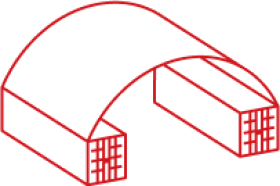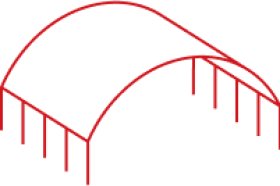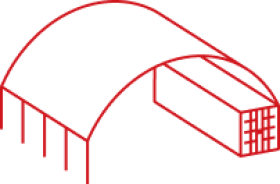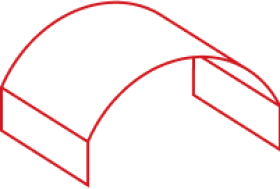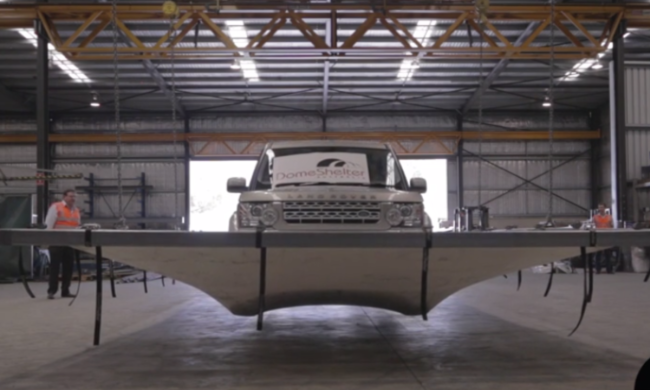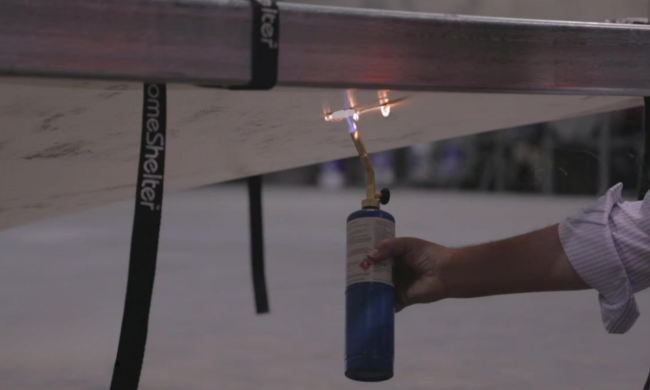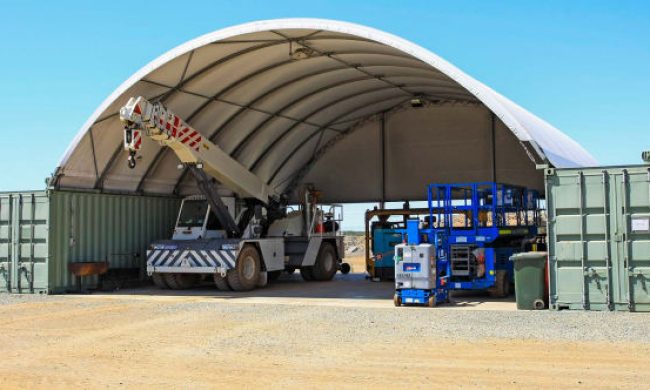If you’ve been researching Fabric Structures, you’ve probably been hearing terms like wind regions, terrain category, and cyclone rated thrown around. You might be wondering what they all mean and more importantly, what they have to do with Fabric Structures.
My name is Brooke, and I’m a part of the Customer Service team here at DomeShelter Australia. Today, I’ll be telling you about wind classification and why it’s important when purchasing a Fabric Structure.
Every proposed Fabric Shelter location will be assessed so it can be given the appropriate design criteria and be properly engineered. Assessment will take into account Australian Standards such as AS1170 and involve three main factors: wind region, terrain category, and importance level. Other criteria, such as design life and annual probability of exceedance, may also be considered if applicable. But in this video, we’re just going to focus on the main three.
For the next few minutes, I’m going to give a simple overview of the three main factors and what they involve.
Wind Regions:
Wind Regions refer to the classification of different regions in Australia based on wind speeds and frequencies of extreme weather events. These regions have been determined according to the Australian standard AS1170 for structural design actions. The four regions are as follows:
Region A: normal wind speeds of up to 162 kilometers per hour.
Region B: intermediate wind speeds of up to 205 kilometers per hour.
Region C: cyclonic wind speeds of up to 248 kilometers per hour.
Region D: severe cyclonic wind speeds of up to 316 kilometers per hour.
Terrain Categories:
Terrain categories are another important factor in building design and engineering that relate to the areas’ wind exposure as a result of the surrounding terrain. At DomeShelter Australia, we base our calculations on three main terrain categories:
Terrain Category One: exposed, isolated, flat, treeless, and poorly grassed, open terrain with few or no obstructions measuring a ten-kilometre radius or more.
Terrain Category Two: open terrain, including grassland with well-scattered obstructions of heights generally between 1.5-5 meters, such as trees and buildings, but no more than two obstructions per hectare.
Terrain Category Three: terrain with numerous closely spaced obstructions, usually between three and ten meters high. This terrain category usually relates to suburban built-up or densely wooded areas.
Importance Levels:
Importance level relates to the level of consequences to people or the public resulting from a building failure. There are four importance levels as follows:
Importance Level One: buildings with a low degree of hazard to human life and other property in the event of a building failure. Typically, level one should only be designated to isolated storage buildings.
Importance Level Two: the default or ordinary level for Structures with medium consequences to human life and considerable economic consequences in the event of failure.
Importance Level Three: high consequence for loss of human life or very great economic, social, or environmental consequences in the event of failure.
Importance Level Four: exceptional circumstances, for buildings essential to post disaster recovery or those associated with hazardous facilities. A hospital, for example, would be Importance Level 4.
DomeShelter Australia assigns projects with one or two different importance level rankings, with one being for buildings with low consequence to human life and two being for moderate to high consequence. Fabric Structures would not be used for an importance level four Structure, so this would not be applicable. Now that we’ve defined the three main factors that contribute to wind region classification, you might still be wondering how they all come together in the Fabric Structure design process.
Based on your location, wind region, terrain category, and importance level are all taken into account to calculate the wind region classification for your prospective DomeShelter™ Structure. In some cases, site owners and local jurisdictions will also have specific requirements that need to be taken into consideration. For example, if a company wants to purchase a Shelter to move often from site to site, it will likely be engineered to suit Region D wind speeds to ensure longevity and adaptability.
Bringing the wind region, terrain category, and importance level together, sometimes we will work out a design wind speed for your Fabric Shelter. This indicates the wind speed that the Structure has been engineered to withstand. For example, a Structure in wind region C with a terrain category of two and an importance level of two would have a design wind speed of 219 kilometers per hour.
It is extremely important to classify each Structure on a case-by-case basis and assess every location individually. If wind is not discussed or properly considered in the design process, it can be hazardous or affect the longevity of your Shelter.Safety and structural integrity are keystones to our design philosophy here at DomeShelter Australia, and we make it our duty to ensure that all our DomeShelter™ Structures are Engineered to Protect.
